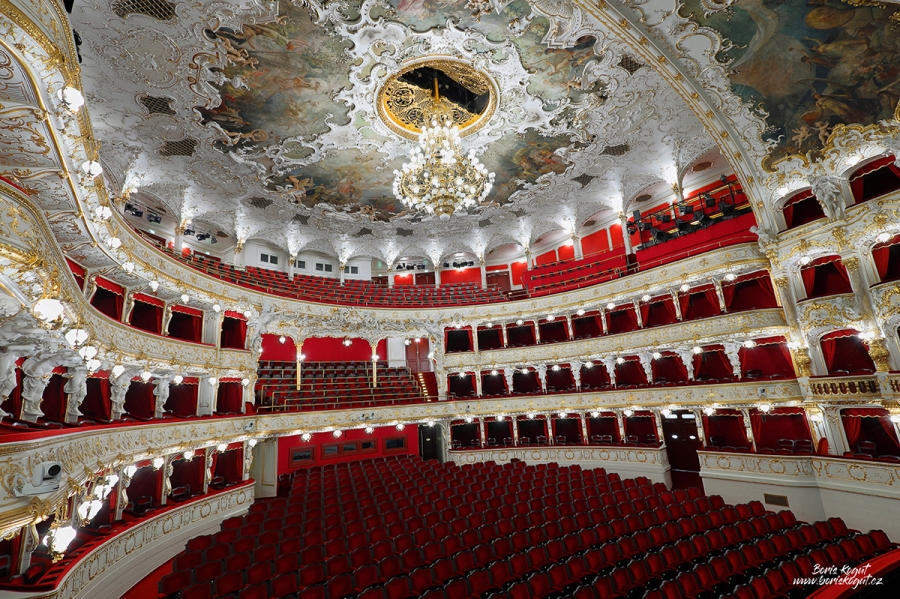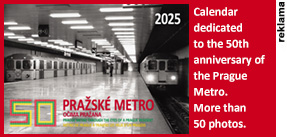The State Opera in Prague: one of the most beautiful opera stages in Europe
Many people know the building of the Prague State Opera, but not many associate it with the Smetana Theatre or the Theatre of 5 May.
The roots of the famous Prague State Opera date back to 1886. It was on 25 March 1886 that the German Theatre Society in Prague obtained permission to build its theatre building - the New German Theatre (The Neues Deutsches Theater). The building of today’s Prague State Opera opened as the New German Theatre on 5 January 1888 with Richard Wagner’s opera Die Meistersinger von Nürnberg.
Text and photo: Boris Kogut, based on numerous publications.

In the 1906/1907 season of the New German Theatre, the operetta The Inspector by the Czech composer Karel Weis, based on the play of the same name by the Russian classicist Nikolai Vasilievich Gogol, was performed for the first time on 21 April 1907.
Tomáš Vrbka in his book Prague State Opera 1888–2008. History of the Theatre in Pictures and Dates,» writes: «The performance of The Inspector and other operettas by Weis at that time was not without scandal in the Czech press, which could not forgive him for writing operettas to German librettos in an attempt to gain access to the German and world stages.
In the end, Karel Weis was not wrong — he was the first Czech composer to conquer the German stage in Prague with his operettas.
The first dance performance at the New German Theatre was the tour of the Mariinsky Ballet Company from St Petersburg with prima ballerina Anna Pavlova in 1908 and 1909.
As we can learn from the above-mentioned book «Prague State Opera 1888–2008»: «At that time, the ballet of the Paris Grand Opera was touring there.
During the first ‘ballet’ evening, the director of the New German Theatre, Angelo Neumann, revealed a completely unacceptable level of dancers, led by prima ballerina Emma Sandrini, who were not quite legitimately performing on behalf of the Paris Grand Opera.
That evening, the director of the Neues Deutsches Theater cancelled the company’s scheduled second performance and promptly brought in a company of Mariinsky dancers from St Petersburg to replace them. The performance was an event in the field of dance at the Neues Deutsches Theater!

It was only 47 years after the Moscow premiere that the management of the Neues Deutsches Theater added to its repertoire one of the great classics of Russian opera — Tchaikovsky’s Eugene Onegin.
The German public received the opera with great enthusiasm, and it premiered at the Deutsches Theater on 25 April 1926. «Onegin paved the way for subsequent Czech and Russian opera productions; on 6 April 1930, the Moscow Chamber Theatre toured here with the operetta Girofle-Girofle.
The Deutsche Oper, which was the new name given to the New German Theatre in 1939, existed until 1 September 1944, when all the theatres were closed.
During the Second World War, the theatre was used for political meetings, and when there were theatre performances, they were usually touring productions from German theatres.
On 19 June 1945, the 5th May Theatre was founded in the former building of the Deutsche Oper. It lasted only one season, 1945/1946, and as is well known, it focused on dramatic productions.
In 1946 an independent opera company, the 5th May Grand Opera, was established in the theatre building.

Photo: Divadelní archiv Národního divadla.
Among the high-profile premieres of the 5th May Grand Opera was Sergei Prokofiev’s comic opera Betrothal in a Monastery, which was performed under the title Masquerade on the evening of 8 October 1947.
The existence of both theatres, the 5th May Theatre and later the 5th May Grand Opera, was accompanied by economic problems. As a result, in the summer of 1948, the 5th May Grand Opera was incorporated into the National Theatre, and the 5th May Grand Opera continued to operate under the name of the 5th May Theatre until 2 November 1949.
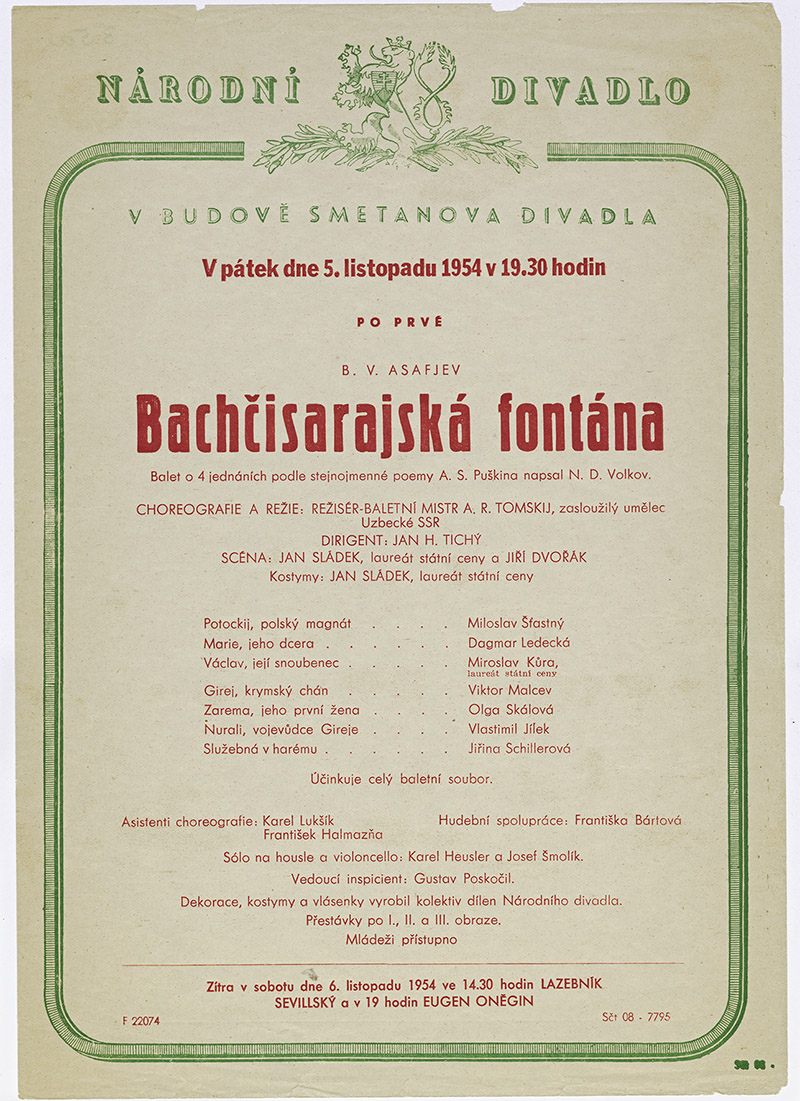
Photo: Divadelní archiv Národního divadla.
On 3 November 1949 the theatre was renamed the Smetana Theatre, where on 5 November 1954 the ballet «The Fountain of Bakhchisarai», based on Pushkin’s poem of the same name, was premiered.
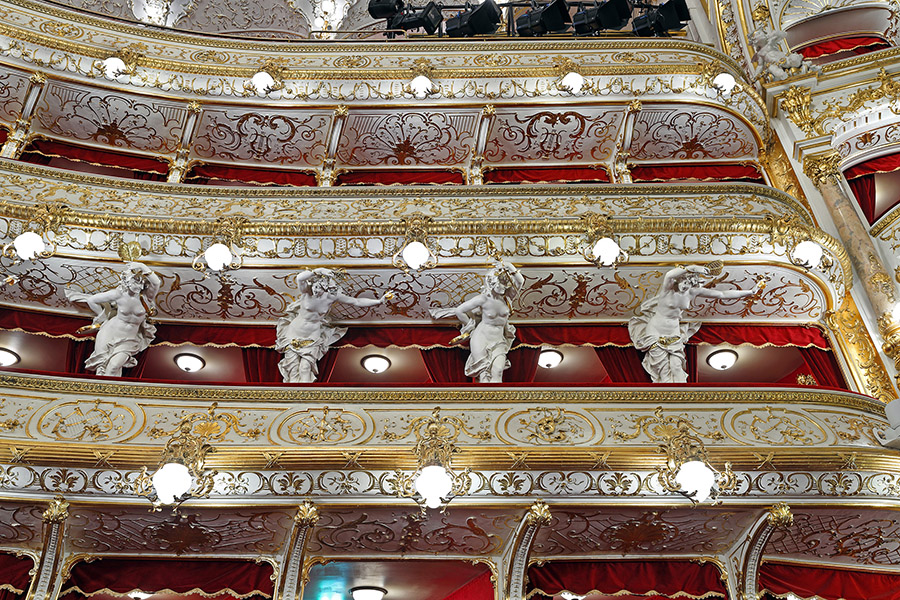
On 1 April 1992, the Smetana Theatre separated from the National Theatre and received a new official name: the Prague State Opera.
The gradual reintegration of the State Opera into the National Theatre began on 1 January 2012 and was completed in 2015.
Today, the State Opera is one of the stages of the National Theatre in Prague. We can see that the stage of the State Opera is mainly used for foreign works: Italian, French and German.
After almost three years of reconstruction, the Prague State Opera reopened on 5 January 2020 with a gala concert featuring the orchestra conducted by Karl-Heinz Steffens and the theatre company directed by Alice Nellis.
The opening of the Prague State Opera in 2020 also saw the installation of a new luxurious curtain, made in the workshops of the National Theatre according to the original curtain design by Eduard Veit from 1888.
A copy of the original curtain was created by the artist and set designer Martin Černý based on an old black and white photograph and a colour image from the film The Golden City, shot in Prague in 1942.
During the 2017–2020 renovation, the interior of the theatre was restored to its original 1888 appearance.
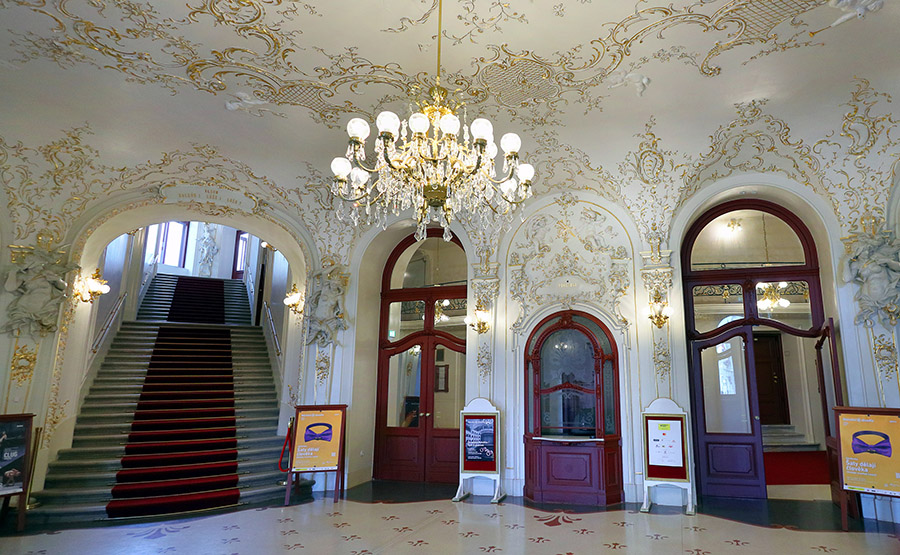
The evening box office in the theatre foyer, which was completely closed to the public during the reconstruction in the 1970s, was opened and restored.
Video cameras have been installed in the auditorium, and each audience member can use a personal tablet in their seat to read the credits in the language of their choice during the performance or to familiarise themselves with the programme.
Address: Wilsonova 4, Prague 1,





